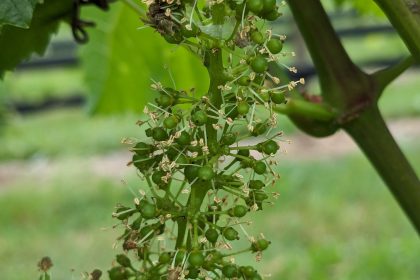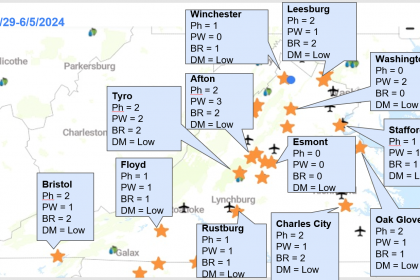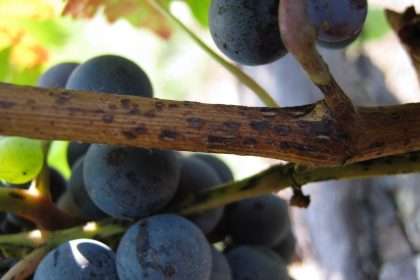Our reds broke buds, and whites have about 1-inch shoot growth on it today, and more rains in the weather forecast. It is time to think about Phomopsis!
What happen from this point to pre-bloom is a relatively simple spray program to manage Phomopsis, downy mildew, and powdery mildew.
During the early part of the season, I typically recommend a mix of mancozeb and sulfur or copper by itself. The reason why I recommend mancozeb now is because it works on so many different diseases (including Phomopsis which is the main target for us), plus, mancozeb has a 66-day PHI and a limit on the amount of mancozeb to be used in a year (e.g., 24 lb (or 18 lb of a.i) if you Dithane DF). Thus, I would like to use mancozeb-based product early in the season.
I have been often asked whether you should include sulfur or not. If your vineyard has a history of powdery mildew outbreak, it would be a good idea to have a sulfur in your tank mix, even at early part of the season. Although you may not able to see it, powdery mildew pathogen gets active when the temperature gets warmer. It is probably a better idea to have your vine covered than risking.
Some people prefer using JMS Stylet oil for early powdery mildew management. It works, but please keep in your mind that you cannot spray sulfur or captan within two weeks of any oil application. It will cause toxicity to grapevines.
A use of a copper-based product is not a bad idea either. It is relatively cheap and effective against both downy mildew and powdery mildew (but not much against Phomopsis). It may not as effective as mancozeb + sulfur, but it can be sufficient. Also, if you want to keep mancozeb as long as its 66-day PHI and yearly usage limit allows (e.g., you want it for ripe rot management), then copper can be a good rotation partner.
The growth of the shoots during the first several weeks is so rapid that you need to make sure that there is a good coverage before the rain. Please remember that it is much easier and more effective if you protect your vines. Once any of diseases start in your vineyard, a catch-up game tends to be not effective. I have heard from many growers that the number of application tends to be fewer if you are proactive in protecting vines. When you have kept a clean canopy and clusters until the end of the critical times for downy, powdery and black rot (I will cover this topic later), then you can relax your fungicide application program.






